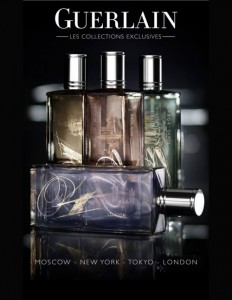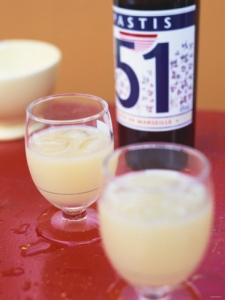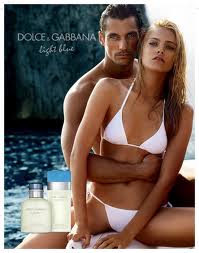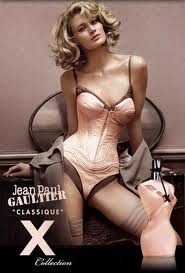 Guerlain has an exclusive, limited distribution collection of unisex fragrances entitled “Une Ville, Un Parfum” or “A City, A Fragrance.” Confusingly, the line is also often referred to as “Les Voyage Olfactifs” (An Olfactory Voyage). Until recently, the cities were Moscow, New York, Toyko and London.
Guerlain has an exclusive, limited distribution collection of unisex fragrances entitled “Une Ville, Un Parfum” or “A City, A Fragrance.” Confusingly, the line is also often referred to as “Les Voyage Olfactifs” (An Olfactory Voyage). Until recently, the cities were Moscow, New York, Toyko and London.

Shanghai
In October 2012, Shanghai joined the line as Les Voyages Olfactifs 05 and the press release quoted by Fragrantica states that the scent is “noted for its freshness and delicacy which are the hallmarks of the collection.” The bottle was designed by the legendary designer Serge Mansau and depicts Shanghai’s famous Oriental Pearl Radio and TV Tower with a big squiggly “05” to represent its numerical place in the collection.
Shanghai was created by Guerlain’s in-house nose, Thierry Wasser, and is supposed to be a light oriental, though I’ve sometimes read it described as a “woody floral scent.” I was excited to obtain a large sample of Shanghai from Debbie, my olfactory secret weapon on eBay, because I was fascinated by the city upon my visit in 2008. (If my external hard drive hadn’t died, taking with it over 60,000 photos, this post would have been deluged by my photos of that jaw-droppingly futuristic city.) It seems, however, that Guerlain is harkening back to the Shanghai of old, the “Paris of the Orient” of the ’20s and ’30s.
I believe it was Luca Turin who once said that all modern perfumes stem from the benchmark scents of the past. They are all children of the perfumed tree, if you will. As such, it’s hard for modern perfumers to escape the influence — conscious or unconscious — of such greats as Shalimar, L’Heure Bleue, Fracas, Opium, Chanel No. 5, Joy, and the like. It must be even harder for a Guerlain perfumer to escape the influence of the greats within his own house, particularly when creating a floral oriental and particularly given the influence of the powdery greats like L’Heure Bleue.
Shanghai represents something that I am starting to see more and more. Perfume houses updating and modernizing their legendary classics for the modern era. They seem to achieve this through a variety of different ways: by lightening the scent, adding fruity or fruity patchouli accords to appeal to young consumers or to the modern taste, sweetening the scent to appeal to the Angel market base, or by adding fresh, clean accords to comply with that blasted trend towards soapy freshness.
Lightening the scent also achieves something convenient for houses like Guerlain: they save money by reducing the amount or concentration of ingredients; they can market the new result as an even more expensive, “exclusive” line to reap the financial profits; and their brand seems less old-fashioned, stodgy and fuddy-duddy to young consumers. (Guerlain’s Les Voyages/Une Ville perfumes cost $215 for 3.4 fl.oz/100 ml.) Everyone wins, except the consumer’s wallet, classicists like me, or those who cannot stand any of the modern trends that they are applying (which is also me).
Shanghai’s notes, according to Fragrantica and the Guerlain press release, are:
anise, orange blossom, almond, cardamom, ylang-ylang, jasmine, iris, mimosa, cedarwood, patchouli, vanilla and sandalwood.
On its website, Guerlain describes Shanghai as a “woody and floral fragrance” and adds:
Surprising and faceted, the fragrance Shanghai from “A City, A Fragrance” collection pays homage to the ever-changing megalopolis of Shanghai. The initial impression is of a sweet freshness, perfectly reflected by an almond accord, combined with a hint of aniseed. Sweet, sun-drenched flowers, ylang-ylang, orange blossom and jasmine combine to create an exquisitely full-bodied scent that conjures up an abstract bouquet with hints of iris and delicately sophisticated mimosa. This olfactory voyage of discovery is underscored by three woody notes—cedar, patchouli and, most sandalwood—offset by a gentle whisper of vanilla, which adds a softening touch to this composition. The fragrance finishes with a suave, elegant flourish.
Shanghai opens with an utterly lovely note of almond and a subtle whiff of anise. My nose finds the anise seed to be less like the usual licorice smell and more like the slightly green, bitter, woody anise scent that is absinthe. But, again, it’s extremely subtle. The anise seed combines with the milkiness of almond to create a very milky sweet impression of diluted Pastis (or Ouzo, if you’re Greek), an anise drink that is common in Europe.

French Pastis.
The usually strong licorice aspect of concentrated anise is diluted to a pale shimmer, either through the milky almond or through a third note that is raising its head: sweet vanilla. It’s a powdery vanilla but not the true Guerlinade that is the signature of so many of the house’s famous scents. Here, it’s just a shadow, a faint touch. (I think “faint touch” describes almost every aspect of this scent.)
The combination of the almond and the powdered vanilla create an almost patisserie-like impression. If you’ve ever been to a French pastry shop and smelled some of their almond offerings, you’ll know what I mean. That said, Shanghai is not a gourmande perfume by any means. It’s not sweet or powerful enough, and there is none of that almost cloying, overwhelming surfeit of linear sugar that characterizes most gourmands. In short, it’s not diabetes in a bottle.

Almond Brioche. Source: Atelier Christine.
Twenty minutes in, I think I can smell some iris in the powdery, patisserie, vanilla under notes but it could simply be my imagination. I certainly don’t smell cardamon, ylang-ylang, jasmine or mimosa. I don’t basically smell much, except for anise, almond and vanilla — and the strength of those notes is sharply dropping by the minute. A full 30 minutes from the time I first put on the perfume, the sillage has drastically shrunk; and exactly 1:16 minutes from the start, I smell almost nothing. If I really push myself and plead with my nose, I suppose I can smell a faint tinge of sandalwood in the powdered vanilla dry-down that remains. But I wouldn’t bet money on it. Why isn’t there more to this scent? What the hell happened to the “full-bodied” of the website description? And isn’t this taking “light” to a new level?
I am so determined to try to smell something more than those three linear notes that I start all over again. This time, I spray about 6 squirts onto each arm. Aaah, that delicious opening of anise and almond, milk and vanilla…. it really is lovely — especially when you really spray a lot of the perfume. But the development remains the same: the hint, almost invisible shimmer of anise, strong almond, powdery vanilla and…. er…. Well, I suppose there may be a touch of sandalwood, but really, this is just a three-trick pony. If all those remaining notes (Ylang-ylang? Really?) are a part of the perfume, they’re in such microscopic quantities that they’re essentially undetectable by my nose.
There are almost no full, detailed reviews on Shanghai thus far, so it’s not easy to see if others have had better luck. One of the few reviews that does go into any depth is by The Non-Blonde. She too smells the anise, almond and patisserie notes, but she finds a bit more to the scent than I do:
Star anise, iris and almond are the first things I smell upon spraying Shanghai. Naturally, my first thought was about the inspiration that obviously comes from L’Heure Bleue more than from China. Shanghai is more floral and also lighter in every way: airier, less sweet, and the base is not that much of a patisserie creation, but the resemblance is there, especially in cooler weather. It took me a little while to really like Shanghai. I love my L’Heure Bleue dearly, so I wasn’t all that thrilled with the idea of a modern interpretation in a massive bottle. But the composition is very pleasing, and as I said– it’s easily recognizable as a Guerlain, which is a good thing for me.
There’s some weakness in the base of Shanghai- not as in the opposite of “strength” (the fragrance has an assertive sillage and a reasonable longevity), but in the lack of real creamy sandalwood. Guerlain Perfumer Thierry Wasser did his best with an approximation and fortified it with cedarwood (dry and almost peppery). It goes well with the powdery iris note that seems to be at the core of Shanghai, but some of the exotic element could have used a big dose of the real thing (one can dream).
I didn’t smell any cedar wood my first time round and, this second time, with about double the amount of perfume sprayed all over my arms, I think I can smell it faintly. Perhaps. Maybe I’m just trying to convince myself. Whatever is there is definitely dry, but it’s not the sort of cedar wood that I’m used to smelling, and most definitely not peppery. If I did smell pepper, I might agree more with her comparison to L’Heure Bleue but, as it is, I find the two scents completely dissimilar. I smell sandalwood much more than any cedar, but, given how little there is, that’s not really saying much. In fact, I’m very relieved to know that The Non-Blonde also has trouble with the nature or quantity of sandalwood that is supposedly in Shanghai.
While The Non-Blonde attributes the powdered heart of Shanghai to iris, I think it’s more of a plain vanilla powder. There is iris there, as I noted earlier, but it’s faint. (I’m getting tired of using the word “faint” when it comes to this scent, but really, it typifies everything about it!)
If you’ll note, neither she nor I ever mention patchouli, jasmine, ylang-ylang, mimosa or any of the other notes purportedly in this incredibly linear scent. Because you really can’t smell them. At all! If I keep at this, and keep sniffing my arm with those notes planted firmly before my eyes, I’m sure that my brain can convince itself that I’m smelling them but, the truth of the matter is, I don’t.
I also don’t share her experiences with sillage or longevity, but I may not be alone in thinking the perfume dies fast. On Basenotes, there are differing reports regarding both issues, with a number reporting experiences similar to mine. Some posters have noted a generally moderate amount of longevity, even if it’s just simmering quietly in the background.
The Basenotes comments are interesting because, there, Shanghai has generally received praise by those who have tried it thus far. Several people note a woody element to the scent that I didn’t really find. (But, yet again, no-one mentions anything about ylang-ylang, mimosa, jasmine or patchouli, so it’s definitely not just my nose that can’t detect them.) One brief review of Shanghai by a male poster, Mikeperez23, may be helpful to those seeking a different perspective on the scent:
I love the extremely limited Quand Vient la Pluie and in my opinion, there is a ‘part’ of QVLP inside of Shanghai – a sort of sweet, almond, heliotrope-ish note that smells simultaneously nutty, floral and woody. Slightly edible, but not in a full-blown gourmand way. Shanghai is more of a transparent, sheer, cologne-ish version of this accord and bolstered by an anisic top note and a less rich, complex drydown. In fact, this one fades fast, so I have to really douse myself with it to ‘stick’, which it finally does. […] Shanghai is perfect for hot weather because of its sheerness and non-heavy feeling that still allows me to enjoy the Guerlinade I so enjoy. […] Not cheap, in fact I think it’s sort of overpriced considering I have to douse myself with it. But, there is nothing that smells like this (well, except as I have noted above, other Guerlain scents) and it’s unique, versatile and comforting aura is addictive.
Another person went so far as to say that the perfume not only has great longevity, but also great “character.” Her description of the perfume is as follows:
I actually get great longevity out of it. I smell it all day at work, and into the evening. On clothing, it lasts even longer. Not as strong as it could be, but strong enough. And I can wear it more than one day in a row, easily, which I can’t do with all of my scents.
Very versatile. Not too casual, not too formal. Good in the Vegas heat, good in the current cold. Not too masculine, not too feminine. But it has character. Lots of it.
I couldn’t disagree more. But I should point out that the last reviewer states that she adores Coco Noir, and admits to loving a lot of mainstream scents that she says she doesn’t even dare mention, so she’s obviously coming at this from a very different vantage point than I am. Perhaps the only thing I do agree with is that this is not a formal scent and it’s not typically casual either. But that’s about it. In my opinion, this scent not only has very little character but it’s also incredibly linear. (And since this is supposed to be one of the better and stronger scents in Guerlain’s Les Voyage/Une Ville collection, I’m not sure what that says about the other fragrances in the line.)
What little character does exist is simply not worth the price tag. I would never pay $215 for this. In fact, I wouldn’t wear it unless it were about $15. At that price, perhaps it would be worth it for those days when I went to the dog park and fell into a mud pit. At that price, I could drench myself with it beforehand and hope that it lasted 2 hours or more. (And, for the record, Shanghai did last longer on my second go-around when I sprayed a ton all over me. But it’s a matter of degree; maybe 2.5 hours in total, instead of about 1.5 hours.)
Bottom line, I cannot recommend the perfume. It’s simply not that interesting for the price. If it were $45 or $60, I would absolutely recommend it to someone seeking something subtle, versatile, and with a slight twist on the usual floral scents. But not at $215, even if it didn’t have dubious sillage and longevity. Life is too short. Go out and smell something with actual character and some pizzazz.










